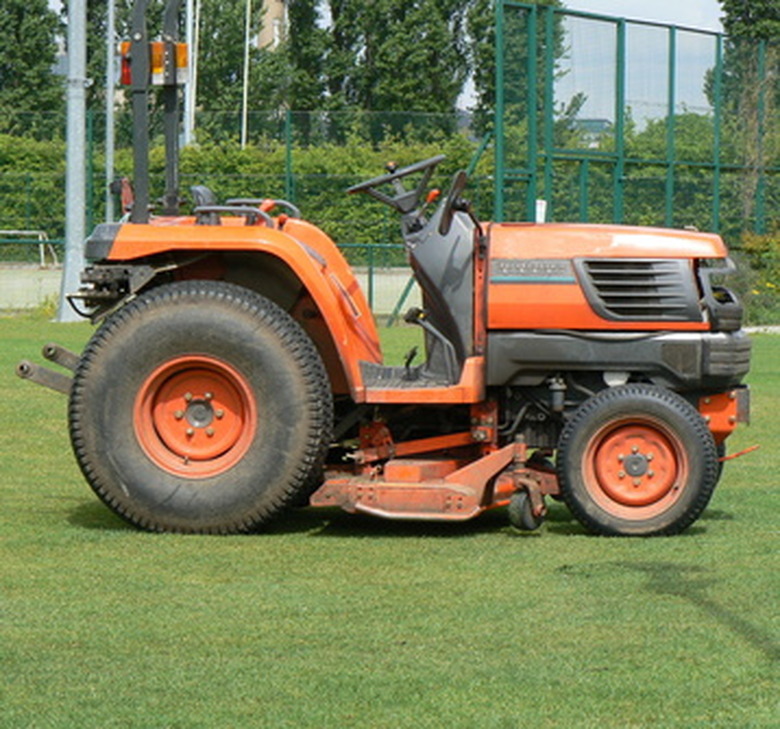How To Know If Your Piston Rings Are Worn Out On A Tractor Mower
Things Needed
- Spark plug socket
- Ratchet
- Engine compression gauge
Worn piston rings will emit smoke from the exhaust of any combustion engine. Oil is leaking past the piston ring seal inside the engine cylinders. In many cases, only one cylinder may have defective rings. By testing the cylinder for engine compression you can narrow down the problem in a few minutes. The only special tool required for the test is an engine compression gauge. The gauge can be purchased at any auto parts store or big box store with an automotive department.
Step 1
Locate the spark plugs on the tractor mower. The spark plug has a rubber-coated wire attached to the top of the porcelain spark plug. Most two-cylinder tractor mower engines will have the spark plugs located near the top of the engine, on opposite sides of each other.
- Worn piston rings will emit smoke from the exhaust of any combustion engine.
- Most two-cylinder tractor mower engines will have the spark plugs located near the top of the engine, on opposite sides of each other.
Step 2
Remove the spark plug wires from all spark plugs.
Step 3
Fit the spark plug ratchet over the spark plug. Insert the ratchet into the socket.
Step 4
Remove the spark plug from the engine by rotating the ratchet in a counterclockwise direction. Pull the spark plug from the cavity hole.
Step 5
Screw the threaded end of the compression gauge into the spark plug hole. The manufacturer of the gauge provides various thread adapters to fit most spark plug hole threads. Tighten the gauge to be hand-tight. Do not use a wrench to tighten.
- Remove the spark plug wires from all spark plugs.
- Pull the spark plug from the cavity hole.
Step 6
Hold the gauge in one hand. Turn the starter key to "On," as if starting the engine. Allow the engine to crank–turn over–for a few seconds. Read the compression gauge while the engine is cranking. Readings below 70 PSI (pounds per square inch) indicates a weak cylinder seal. The cylinder rings are worn and require replacing.
Step 7
Remove the gauge from the first cylinder. Replace the spark plug. Tighten with socket and ratchet.
- Hold the gauge in one hand.
- Remove the gauge from the first cylinder.
Step 8
Remove the second spark plug from the second cylinder. Conduct test. Continue test with each separate cylinder if warranted.
Tip
Bad compression gauge readings reveal reduced pressure from the cylinder. This will reduce power from the engine.
References
- "Briggs and Stratton Repair Instructions IV"; Briggs and Stratton Corporation; 1975
- "Small Engines Service Manual"; Intertec Publishing; 1976
- M and D: Small Engine Repair
- Small Engine Supplies: Small Engine Specifications
